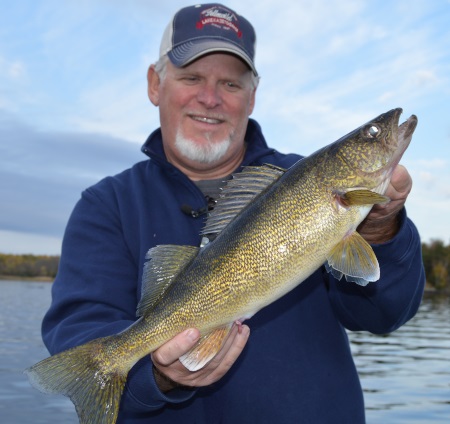
For many of us, it’s been too long between the last ice-fishing trip and the first open water fishing trip of the year. If you haven’t been fishing on open water yet this year, you’ll want to be ready to go when the opportunity presents itself. Following are some things that you can do now to increase your odds of success when you go fishing.
The first one is an easy one: Make sure that you start the season with fresh line. Old line will hook just as many fish as fresh line, but fresh line will allow you to land more of those fish.
Back in the day, fifty plus years ago when I developed an interest in fishing, I spent a lot of time in the back yard practicing casting. I practiced with baitcasting equipment mostly, because back then it was easy to get overruns on baitcasting reels. Today’s baitcasters are so much better, but a little practice certainly doesn’t hurt.
I also practiced my casting accuracy, and that for sure helps put more fish in the boat. When you can cast your bait where you want it, especially when fishing visible cover for bass or panfish, you’re going to increase the number of fish you catch. If you splash your bait right down on a stump, any bass that’s there will probably leave. Same thing with a crappie. But if you place your cast a little beyond the target and bring it to the suspected fish hide-out, you’re chances of getting bit are so much better.
Practice your knot-tying. That sounds basic, but many of us are fishing differently now than we used to, and tying the proper knot quickly and effectively will help us get our bait to the fish quicker. Here’s what I mean.
Drop-shotting has become a very effective way to catch fish, but we tie the hook on differently for drop-shotting than we do for, say, jigging. Now is a good time to learn how to do that.
Along those same lines, many of us are using fluorocarbon line attached to braided line. Fluoro and braid both offer advantages, and when we team the two together, the advantages are really apparent. However, tying them together can be a bit tricky. Spend some time practicing tying braid to fluoro or monofilament now so you can do it quickly when you’re fishing.
In the winter months many anglers get new electronic equipment such as sonar for their boat. Modern sonar is amazing stuff. Much of it offers a lot of fish-catching features, but some of us get confused when it comes time to put those features to use. Now is an outstanding time to research how to use the various features on your new sonar. If the equipment has already been installed on your boat, a just-as-good and maybe even better plan is to go out in the garage, get in the boat, put the sonar unit in the “simulation” mode, and get familiar with it.
A flasher depth-finder was the first piece of fishing related electronic equipment that I used. At some point, I acquired an even newer type of depth-finder that had a feature called Loran-C. Loran-C was the predecessor to GPS. I wanted to learn how to use Loran-C, but there was no “simulator” mode. No problem: I simply hooked my boat and trailer to my truck, turned on the Loran-C mode, and had my brother pull me around town. It didn’t take long to figure out how Loran-C worked. Disclaimer: I lived in a very small town and this was at least thirty five years ago. Thanks to tutorials on the internet and “simulator” mode in our electronics, this means of instruction is no longer necessary or advised.
We’ll get to be on the water soon. If you do some of the things just mentioned, you’ll be much more ready to fish effectively at that time.
PHOTO CAPTION: Put some time in now getting ready for fishing and you’ll be more ready when it’s time to go fishing.
To see new and old episodes of Fishing the Midwest television, fishing articles and fishing videos, go to www.fishingthemidwest.com
By Bob Jensen
